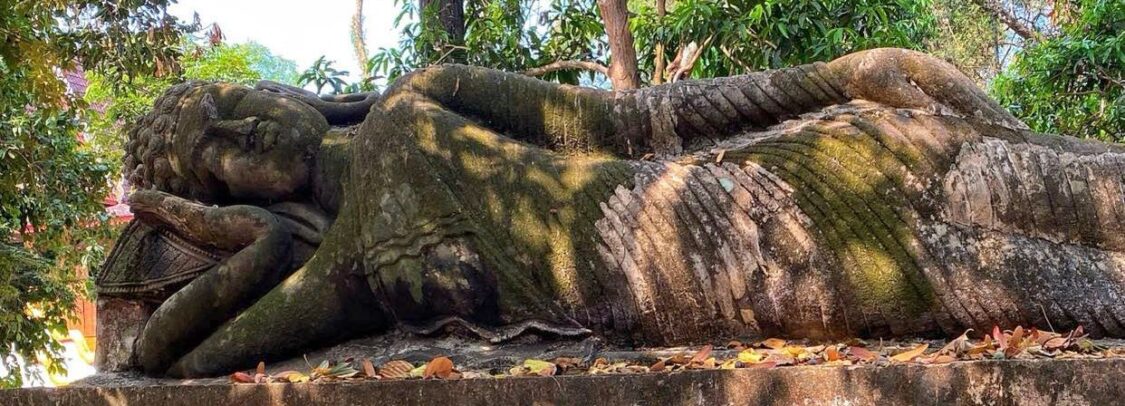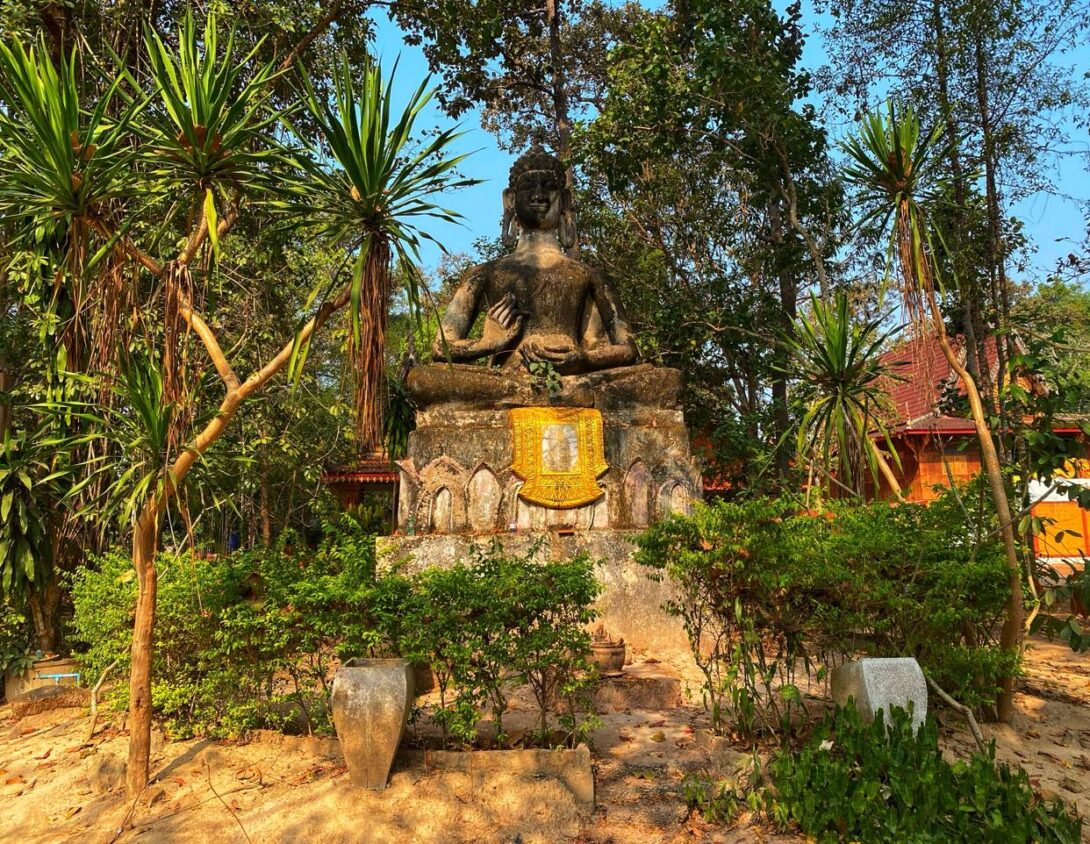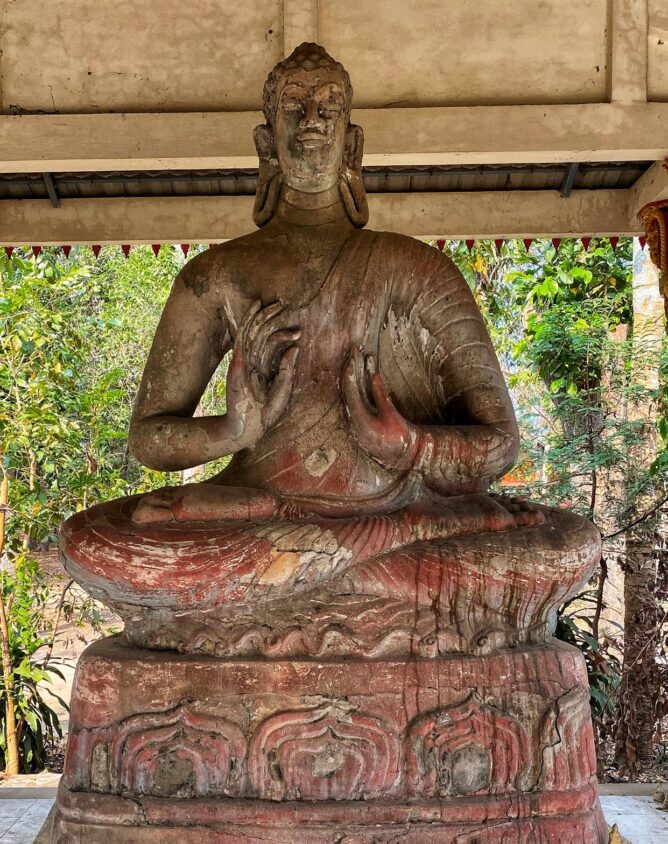Description
Wat Maha Samanakit Phawana (วัดมหาสมณกิจภาวนา) is a historic Sakon Nakhon temple with a number of Buddha sculptures that trace back to the late 1800s. The old stone statues include a reclining Buddha, a Buddha with hands raised and palms forward (repelling conflict), and two DharmaChakra Buddhas, also known as the Teaching Buddha.
All of the stone sculptures have unique features that we haven't seen in other Buddha statues in Thailand. One of the most interesting was in a Teaching Buddha statue, where there is an upturned (cupped) left hand, hanging down below the waist and pointing outward, while the right hand is showing the traditional Vitarka (circle) mudra. Even when searching online, we haven't found this gesture in a sculpture of the Buddha.
In addition to the 19th century stone sculptures, there are old brick platforms and walls made from laterite bricks — laterite being a clay rich in copper and aluminum that was used for centuries in the building of temples in Thailand, including ancient Khmer temples such as Phra That Phu Phek.
There is a large concrete and wooden Viharn where locals commonly congregate on the Thai Buddhist Sabbath, and on special Buddhist holidays. The orange color of this congregation hall combined with the patina of the weathered wood makes for a very attractive Viharn in which to hear a monk's sermon.
The name of the this temple, Wat Maha Samanakit Phawana (วัดมหาสมณกิจภาวนา), translates to the Great Temple of Prayerful Monastic Duties, and local monks do gather monthly here to discuss their monastic responsibilities.
The temple also is well-known for creating in 1976 a "first edition" sacred amulet of the revered monk Phra Ajarn Rianchai Mahapanyo (พระอาจารย์เหรียญชัย มหาปัญโญ), a great-nephew of Sakon Nakhon's most famous monk Luang Pu Fun Acharo.
Wat Maha Samanakit Phawana is located in Tambon Phanna Nikhom about 30 minutes from the Sakon Nakhon City Gate in the direction of Udon Thani.










